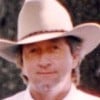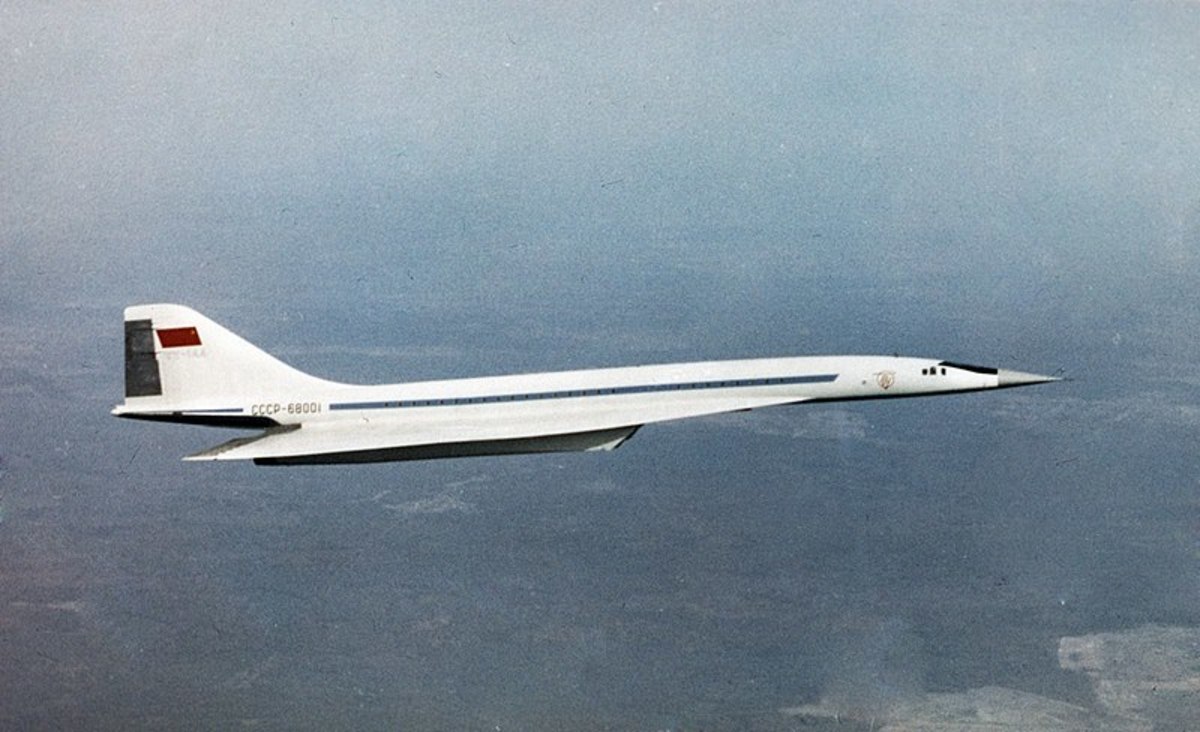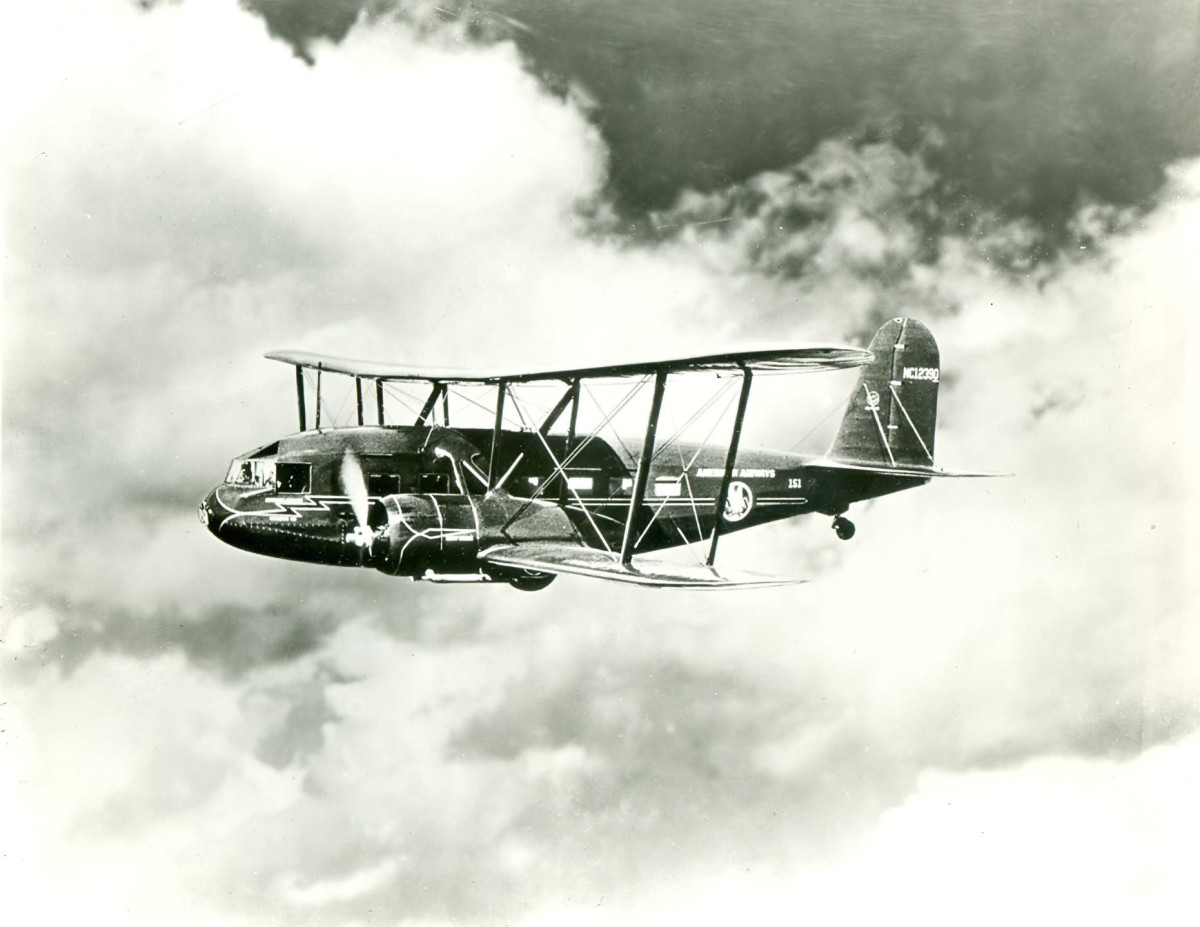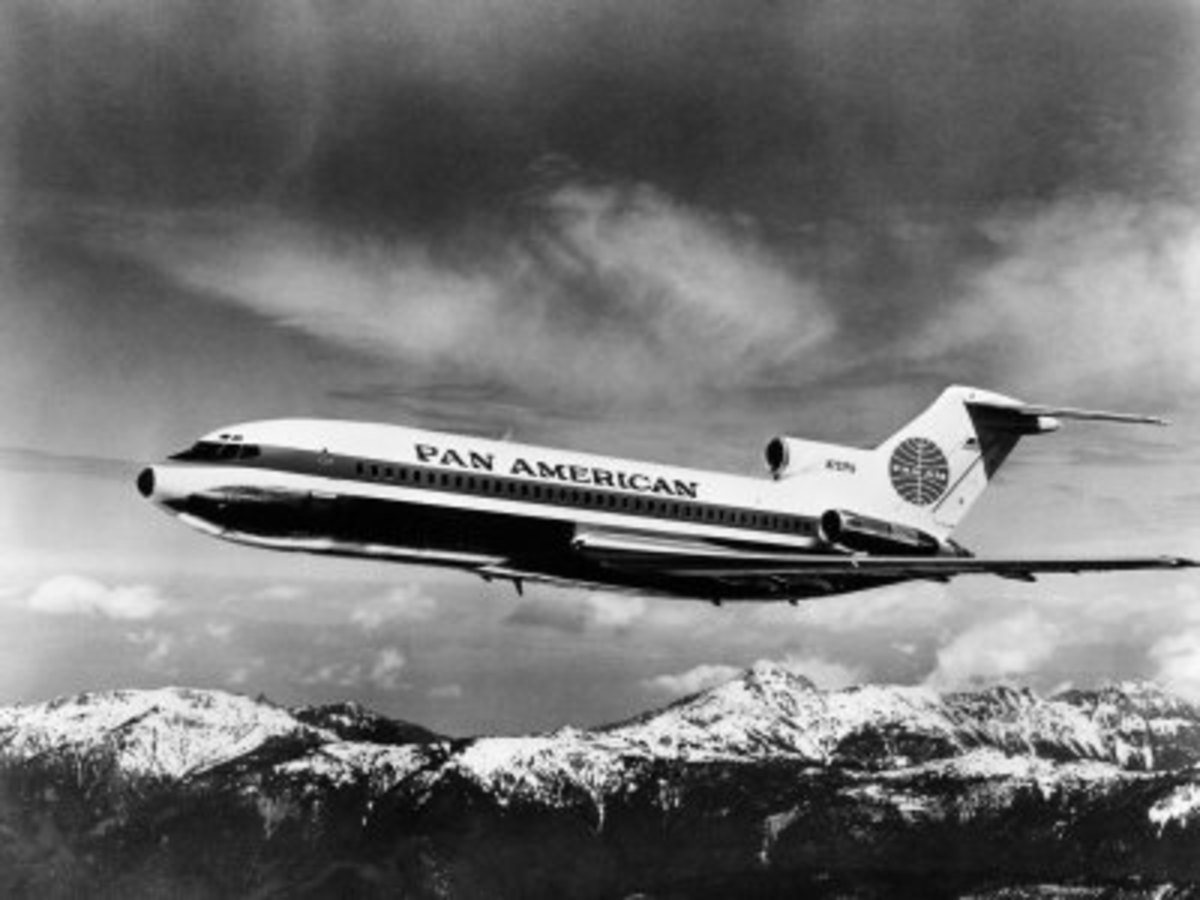D.B. Cooper: A Jump into Folklore
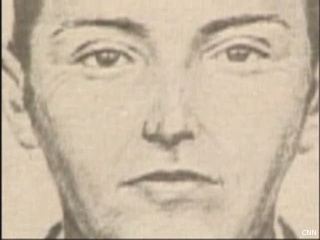
By: Wayne Brown
On November 24, 1971, A Northwest Orient Airlines Boeing 727-51 model aircraft (FAA registration N467US) sat at a jet-way loading ramp at Portland International Airport. The aircraft would service the 30-minute passenger flight from Portland to Seattle known as “Flight 305” on this day. This was the day before Thanksgiving but the Seattle route was not a popular one on this date with only one-third of the available seats booked as the departure hour neared for the flight. Captain William Scott would be in command of the aircraft for the short journey and light load. Captain Scott and his crew went about their pre-flight duties preparing for what appeared to be another routine short hop to Seattle. Little did they know that they were about to have front row seats on a flight that would make history in aviation.
At the Northwest ticket counter inside the Portland International Airport, Northwest ticket agent, Hal Williams, greeted a brown-eyed man in his mid-forties as he approached the agent at the counter. He was dressed nicely wearing a black raincoat over his dark suit which was trimmed out with a starched white shirt, a black neck-tie, and a pair of black loafer shoes. The tie was held in place with a “mother of pearl” tie clip. The man stood slightly less than 6 feet tall. He man carried no luggage, only a black valise and a small brown paper-bag with him. As he approached the counter, he identified himself as “Dan Cooper” and indicated to the agent that he wanted to purchase a one-way ticket on Flight 305 to Seattle for the upcoming departure. Agent Williams completed the purchase transaction entering the name “Dan Cooper” on manifest and the boarding pass assigning seat 18C for the boarding. The ticket cost was $20.00 including taxes. Cooper paid with cash.
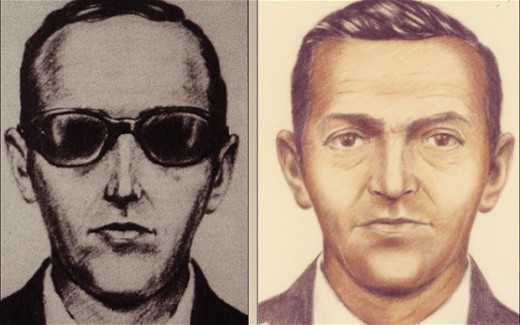
In 1971, one could buy a ticket from the airline for one-way with cash in any name they desired…identification was not an issue nor was security as the airlines had experienced no significant troubles over the many decades of their operation thus Cooper’s desire for a one-way ticket on short notice did not raise any reasons to suspect that he might have sinister intentions which could endanger the aircraft and its passengers. There were plenty of seats available and Northwest was more than happy to fulfill Mr. Cooper’s desires.
The weather in Portland for this Thanksgiving Eve day was typical of the Portland area with a low cloud deck and a rainy drizzle falling intermittently. Weather records show an area of low pressure was situated in the Gulf of Alaska that had begun to move on-shore into the Pacific Northwest. They system contained heavy rains for the coastal regions of the upper Pacific coastal states of Washington and Oregon. The air was damp and the day had a chill on it as is typical for many days in the northwest. Cooper had planned well for the conditions with his black raincoat protecting his suit and tie from the falling raindrops.
Dan Cooper made his way to the assigned gate for Flight 305 to Seattle and waited for the call to board the flight. Once on board, Cooper moved to his assigned seat (18C), an aisle near the mid passenger cabin. In retrospect, Cooper was not a remarkable figure and went unnoticed in the waiting area and on the boarded aircraft. His appearance was one of a clean-cut, well-dressed, respectable businessman of which there were thousands traveling the skies of America at the time. Cooper just melted into that unnoticeable herd that trotted the skies by the week.
The crew of Flight 305 included Captain William Scott, 51 years of age, and a 20 year veteran of Northwest operations. His copilot was First Officer William “Bill” Ratazak and the flight engineer and 2nd Officer, sitting directly behind the copilot at the systems panel was Harold E. Anderson. The passenger cabin was staffed by three flight attendants led by Senior Flight Attendant, Alice Hancock and included Tina Mucklow, age 22, and Florence Shaffer, age 23. Both had less than two years of flight experience at the time.
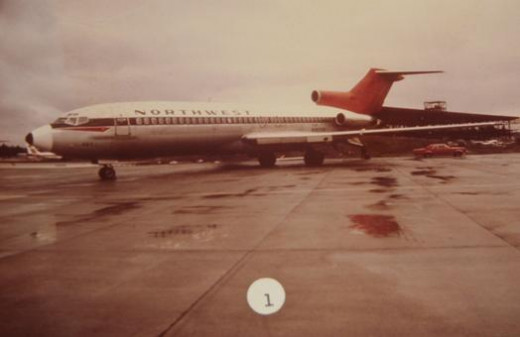
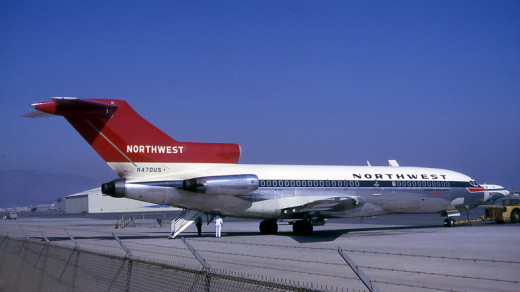
The Boeing 727-51 assigned to Flight 305 on this day was registered with the Federal Aviation Administration as “N467US” with manufacturer number “18803” making it the 137th aircraft in the build series. The aircraft had first flown on the 9th of April 1965 having to date logged six years and 8 months of service in the Northwest fleet. This configuration offered 134 passenger seats. The aircraft was powered by three turbojet engine configured with one on each wing and one embedded into the base of the tail section of the airframe. At the time, various models and configurations of the 727 formed the backbone of domestic aviation. The 727 represented a leg up technologically on its predecessor, Boeing’s initial passenger jet entry, the 707, and offering not only tri-engine power but also a variable wing configuration which included flaps at the rear of each wing and extendable slats on the front of the wing allowing the aircraft to operate into airports not serviceable by its predecessor, the 707. The aircraft would serve as the workhorse of aviation industry well into the 1990’s prior to its retirement as airlines opted for more fuel efficient models coming on the market.
Northwest Orient Flight 305 was a “milk-run” of sorts which originated in Washington D.C. each day. The flight made stops at the Northwest Headquarters hub in Minneapolis, MN then went on to Great Falls and Missoula, Montana before finally arriving into Portland. Seattle would be the final destination on the journey. NW 305 could carry a total of 94 passengers in full load with 28 in first-class and 66 in coach seats. On this Thanksgiving Eve day, the flight was running about 30 minutes late on the scheduled 2:35 PM departure time.
At 2:55 PM local time in Portland, Flight 305 was still taxiing and drawing near to the point where it would access the active runway for takeoff. Passenger Cooper caught the attention of flight attendant, Florence Shaffner, and handed her a note which she promptly put into a pocket of her uniform thinking it was yet another come on from a traveling salesman. She then headed off to assist other passengers. Cooper waited for her to come back that the aisle and got her attention again. He motioned for her to move down close and he whispered to her, “You’d better read that. I have a bomb”, then pointed to the briefcase occupying his lap. The time was 2:58 PM and Flight 305 was taking the active runway for the takeoff. Shaffner immediately moved to the galley where she read the note which was written out very neatly stating, “I have a bomb in my briefcase. I will use it if necessary. I want you to sit next to me. You are being hijacked. She then shared the note with flight attendant, Tina Mucklow.
Flight 305 rolled down the runway at Portland International and lifted off at 3:07 PM. As the aircraft climbed through the lower cloud deck and headed for its cruise altitude for Seattle, flight attendants Shaffner and Mucklow made their way quickly to the flight deck to share the information contained in the note with Captain Scott. In a matter of minutes Cooper’s note had transformed the on-board atmosphere of Flight 305 from routine to tense. For the moment, the other 35 passengers aboard were unaware that anything out of the normal was taking place. As the aircraft continued its climb en route to Seattle, Captain Scott contacted air traffic control and was advised to cooperate as much as possible with the hijacker.
At 3:13 PM, Captain Scott had received additional information on Cooper’s demands. Flight 305 radioed the Northwest Operations Center at Sea-Tac International Airport with a message. In abbreviated form via teletype, Captain Scott advised that the aircraft had been hijacked en route to Seattle. He indicated that the hijacker was demanding $200, 00 in a knapsack and four parachutes (2 back mount chutes and 2 chest pack emergency chutes).
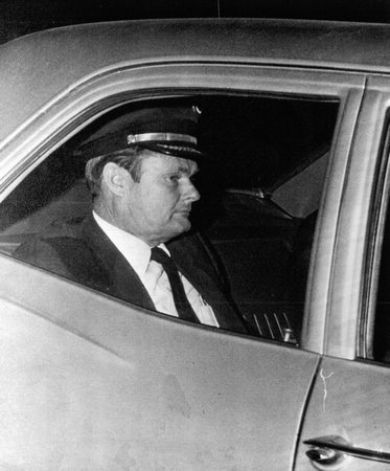
Cooper directed that Flight 305 could not land upon arrival at Sea-Tac International until he was assured that the money and the parachutes were at the airport and ready to be delivered. Nearing Seattle, Flight 305 entered into a holding pattern over the Puget Sound. Captain Scott received assurance that the requested items were waiting at the airport to be delivered to the aircraft. Hearing this confirmation, Cooper gave the crew permission to proceed with the landing. Flight 305 touched down at 5:45 PM local Seattle time and taxied to a parking spot. Once the money and parachutes were delivered aboard the Boeing-727, Cooper released the 35 passengers and two flight attendants to depart the aircraft. The crew remained on board for the next leg and awaited Cooper’s instruction.
Cooper indicated to Captain Scott that he wanted to take-off once the aircraft was refueled and head for Mexico. Once airborne, Cooper told Scott that he wanted him to depart the airport traffic pattern and set a course southward for Reno, Nevada. Captain Scott set a course for Portland and would then proceed from that point toward Reno. Scott was instructed to keep the airspeed below 170 knots and to maintain an altitude below 10,000 feet. Scott was to keep the wing flaps extended to 15 degrees and the landing gear was to remain down. Once airborne, the rear-entry stairwell access was to be opened. The Boeing-727 lifted off the airport runway at 7:38 PM Seattle local time and turned southeast toward Reno carefully following Cooper’s instruction as to speed, altitude, and configuration. Cooper had taken a flight attendant to the back of the aircraft with him to show him how to operate the stairwell access and to act as a hostage to keep those on the flight deck in line with his demands. Immediately after being show the stairwell controls, Cooper sent his hostage back to the cockpit area leaving him alone in the back of the 727.
On the flight deck, noticeable shifts in the atmospheric pressure inside the aircraft were apparent as crew-members experienced “ear-popping. On the flight deck, a panel light flashed confirming the rear stairwell was actuated and open. Obviously, the hijacker had opened the stairwell access in the tail section of the aircraft in preparation to make use of the parachutes which he had demanded. Captain Scott had the crew remain in the flight deck area even though there was evidence that Cooper may have already departed the passenger cabin.
Captain Scott remained the flight plan as it had been directed by Cooper. The 727 continued on course toward Reno configured for low airspeed flight and with the land gear extended. Three and one-half hours later, it touched down safely on the runway at Reno Airport dragging the extended rear stairwell against the concrete on touchdown. Investigators would later determine that Cooper had jumped from the rear section of the aircraft at approximately 8:13 PM over the southwestern regions of Washington State. Dan “D.B.” Cooper had been seen for the last time disappearing into the cold, dark and rainy night sky beneath a parachute descending into the heavy forested timberlands of southwestern Washington.
Cooper was described by witnesses as being approximately 6 feet tall and weighing as much as 175 lbs. The culprit never referred to himself as “D.B. Cooper” which is a moniker that was assigned by a reporter who misunderstood that he had stated that his name was “Dan Cooper”. The mistake stuck and history stayed with the reference to “D.B. Cooper” as the name of the hijacker. Along with the name, the individual posing as Cooper took a permanent spot in history as a man who had successfully pulled off a hijacking, received his ransom, and successfully escaped, at least as far as history records to present day. Cooper had parachuted into some rather challenging terrain in the foothills of southern Washington. Deeply forested, the foothills approaching Mount Rainier and Mount St. Helens offered many challenges for an untrained individual. Given the fact that Cooper had no issue jumping out of an airplane, it is easy to assume that he had some skills in terms survival and possibly escape and evasion. At the same time, parachuting into a dense forest in the darkness of night offers many opportunities ranging from death to being stranded high up in a tree top and tangled in parachute lines. The weather Cooper jumped into that evening also would have further complicated his ability to select a landing site and navigate to it visually. Cooper certainly could have died in his attempt to escape but 40 plus years of searching has not confirmed or denied the result.
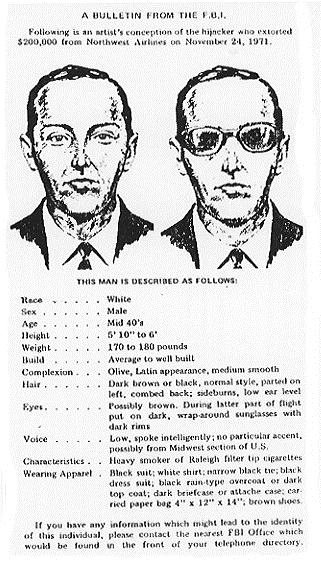
Cooper’s escapade generated over 17 books covering the subject and one movie starring Robert Duvall in the role as D.B. Cooper. There have more than 1,000 suspects including one woman considered in the crime and some of those suspects have actually made deathbed confessions implicating themselves to be Cooper. Still, nothing of a concrete nature has surfaced to confirm any suspicions or to indicate the fate of Cooper or his ransom. After over 40 years, the hijacking remains the only completely successful one in U.S. aviation history and the only unsolved one as well. D.B. Cooper has become an object of folklore in American history.
Among the suspects considered are two men were two men with parachuting skills. William Gossett was a former military type with parachute training and experience. Gossett died while on the run in Utah. He was said to have a safety deposit box which indeed contained $200,000. The story also goes that near the end of his life Gossett confessed to a retired judge and to his sons that he was the famous, D.B. Cooper. Apparently the FBI has not been able to make that confirmation with the evidence at hand.
Kenny Christenson was also considered as a suspect. Christenson was a former paratrooper. Christenson is never known to have claimed or confessed to be Cooper but his brother became convinced that he was after Christenson died in 1994. Here again, the evidence on hand with the FBI did not match up to confirm Christenson’s role in the hijacking. The FBI apparently has some DNA and fingerprints which are used to make comparisons of potential suspects. Apparently, neither Gossett nor Christenson provided a match. In some circles, Christenson is still seen as one of the better candidates in that he was a Northwest Orient employee familiar with the Boeing 727 aircraft. He drank bourbon whiskey (Cooper’s drink of choice), smoked Cooper’s cigarette brand…Raleigh. Beyond those factors, one also quickly notices the similarity between the Cooper sketches and the photo of Christenson who was said to be a disgruntled employee at the time of the hijacking.
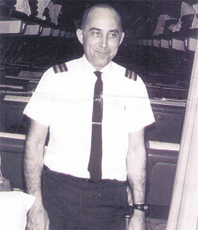
There is also the question of the $200,000 ($20 bill denominations) which the FBI also seems to be recorded by serial number with the FBI. Agents for the FBI have stated that the “money has surfaced in some amounts or they expect that more of it will surface in the future”. FBI officials assigned to the case state that the case is still open and active although the activity surrounding leads is minimal after over forty years. As late as 2011, the agent in charge of the case released information confirming that a credible suspect was under scrutiny and that the suspect has “strong” ties to the hijacking such that articles belonging to that person were being evaluated for DNA evidence or a fingerprints match.
In August of 2011, the newspaper, USA Today, featured a story in which an Oklahoma woman named “Marla Cooper” told two television networks that she was convinced that her uncle, who was dead, had committed the hijacking attributed to D.B. Cooper in November 1971. The man’s name was Lynn Doyle Cooper. Cooper had died in 1999. Ms. Cooper stated that she had provided articles (a guitar strap and a Christmas photo) belonging to her uncle for FBI Lab examination. She also told the networks that she never saw her uncle again after 1972 and where he lived could never be revealed. Ms. Cooper went on to say that she heard her uncle state, “We did it. Our money problems are over, we hijacked an airplane.” The uncle’s involvement was also confirmed to Cooper by her father on his deathbed in 1995.
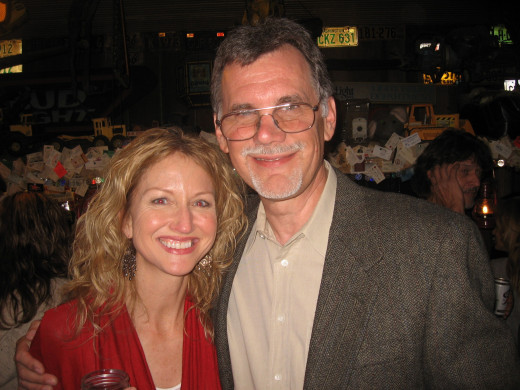
According to Marla Cooper’s story, two of her uncles departed her grandmother’s house in Sisters, Oregon claiming that they were going on a turkey-hunting trip. This event took place on the day of the hijacking, November 24, 1971. When the men returned, Uncle Doyle Cooper was bloodied and all bruised up and claiming that he had been involved in an auto accident. While this sounds like a credible story, those who have researched the evidence on file with the FBI say that there are a lot of such suspicious “Uncle Doyle” types in the stack and this is just one more of them. Adding to the problem is the question of whether or not Uncle L.D. actually resembles the man described as D.B. Cooper. Uncle L.D. did have some military experience dating back to the Korean War but nothing of record as far as experience as a paratrooper. Uncle L.D. was said to have some insider knowledge of the Boeing 727 and would have known how low and slow it could fly as well as the fact that one could depart it from the rear passenger stairs.
Ms. Cooper also claims that her uncle lost the money on the parachute jump and had wanted to return to the site and search for it. Her father stopped that effort possibly because the FBI was all over the case by this time and the area would be under tight surveillance. If story has merit and Uncle L.D. does prove to be “D.B. Cooper”, then one must wonder “what happened to the money if he never returned with it?” Of course the fact that Uncle L.D. never returned with the money is in conflict with the quote attributed to him that “we’ll never have to worry about money again” the niece claimed to have heard upon his return. The only way that statement holds water is if L.D. planned to return and find the lost bills.
In 1980, eight year-old Brian Ingram was with his father on a river outing in southern Washington State. While digging in the sandy banks of the Columbia River, Brian uncovered $5800 dollars in $20 denominations. The Columbia River forms the border which separates the States of Washington and Oregon. The bills were rotten and deteriorating but many still had readable serial numbers. The money was separated into three bundles and was very close to the sandy surface leaving investigators to believe that it had been washed there in the runoff waters as opposed to being buried. No other money was found in follow-digs on the site by the FBI. The bills proved to match the ransom money passed to Cooper in Seattle on the night of the hijacking. Insurance companies that covered the ransom recovered most of the deteriorated $20 bills but young Ingram was allowed to keep a portion of them. After Ingram became an adult, he auctioned some of the bills to the public as souvenirs. The bills were expected to net between $750 and $1500 each on eBay with the proceeds going to Ingram. The irony of this find was that Brian Ingram’s father was a fugitive from justice in Oklahoma having left that state with “mortgaged goods” for which he failed to meet the payments. The father was jailed as a result of the outstanding warrants. To date, the bills found by Ingram are the only portion of the ransom to surfaces none have shown up in circulation.
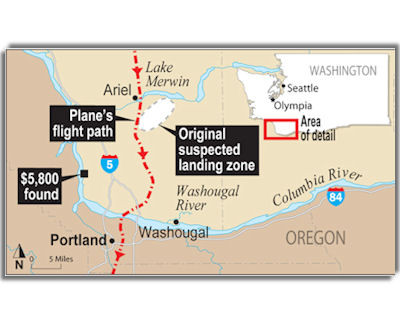
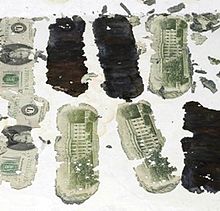
In 2007, the FBI revealed their two major evidence sources in the case. Fingerprints had been lifted from the airliner seats and things which Cooper touched while aboard the aircraft including the cigarette butts he crushed out in the ashtray installed in the seat arm. A single strand of hair was also retrieved and thought to be Cooper’s. Cooper also abandoned his back clip-on neck-tie and tie clasp prior to his jump from the aircraft. From this item, the FBI was able to retrieve enough DNA to sufficient provide a comparison basis for any person suspected of the crime. Still, technology must make significant strides beyond today’s levels to make use of all the evidence, such as the strand of hair. To date, no one suspected or confessing to the hijacking has met the evidence and matched it and D.B. Dan Cooper remains a mystery if he is indeed even still alive.
One thing stands out in this 40+ year old mystery and that is the awareness that D.B. Cooper has inserted himself into the folklore of America, especially in the region of the Northwest where the hijacking occurred. Though Cooper is technically a criminal and a fugitive from the law, his act has taken on heroic overtones. D.B. Cooper is looked upon as the man who “beat the system” from beginning to end. He defied the odds, came up with a plan and successfully carried it out. Even if the identity of Cooper is eventually defined, his place in American folklore has already been decided. One Northwest local summed it up when she said, “D.B. Cooper is the Bigfoot of the Northwest.” Somewhere out there, an 80-something year-old man may have read those words then smiled and winked to no one in particular.
©Copyright WBrown2012. All Right Reserved.
26 August 2012
